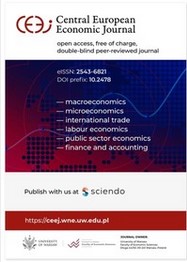Synergies in the Land Use Sector: What Is the Best Policy Approach When Co-benefits and Trade-offs Are Involved?
Synergies in the Land Use Sector: What Is the Best Policy Approach When Co-benefits and Trade-offs Are Involved?
Author(s): Martín López RamírezSubject(s): Energy and Environmental Studies, Physical Geopgraphy, Human Ecology, Environmental interactions
Published by: Wydawnictwa Uniwersytetu Warszawskiego
Keywords: Adaptation; Mitigation; Ecosystem Services; Deforestation; Forest Degradation;
Summary/Abstract: Mitigation and adaptation are the main strategies to address climate change. Both of them are interrelated instruments and key elements of an integral approach to tackle the phenomenon. This interrelation is particularly strong in the land use sector, an area in which practically any policy has a significant effect on the goals of both strategies. Yet, in practice, mitigation and adaptation are treated as two different instruments. A poor understanding about the interactions between the mentioned strategies remains as a barrier to implement the integrated approach. To contribute to fill-in this knowledge gap, a hypothetical ecologic-economic system simulated under deep uncertainty was used to test environmental and welfare implications of different policy configurations. Taking the unregulated economy as a benchmark, the outcomes of the mentioned interventions were classified as synergies or different forms of trade-offs. Results indicate that measures based on internalization of externalities overcame monetary compensation schemes. Moreover, when externalities were corrected, synergies were more frequent and associated to higher environmental and welfare gains. Furthermore, the policy configuration that exhibited best synergic properties was an intervention integrating mitigation and adaptation measures. This indicates that synergies may be more accessible than previously considered, however, current policy approach and incentives may not be the best tools to trigger them.
Journal: Central European Economic Journal
- Issue Year: 6/2019
- Issue No: 53
- Page Range: 54-69
- Page Count: 16
- Language: English

